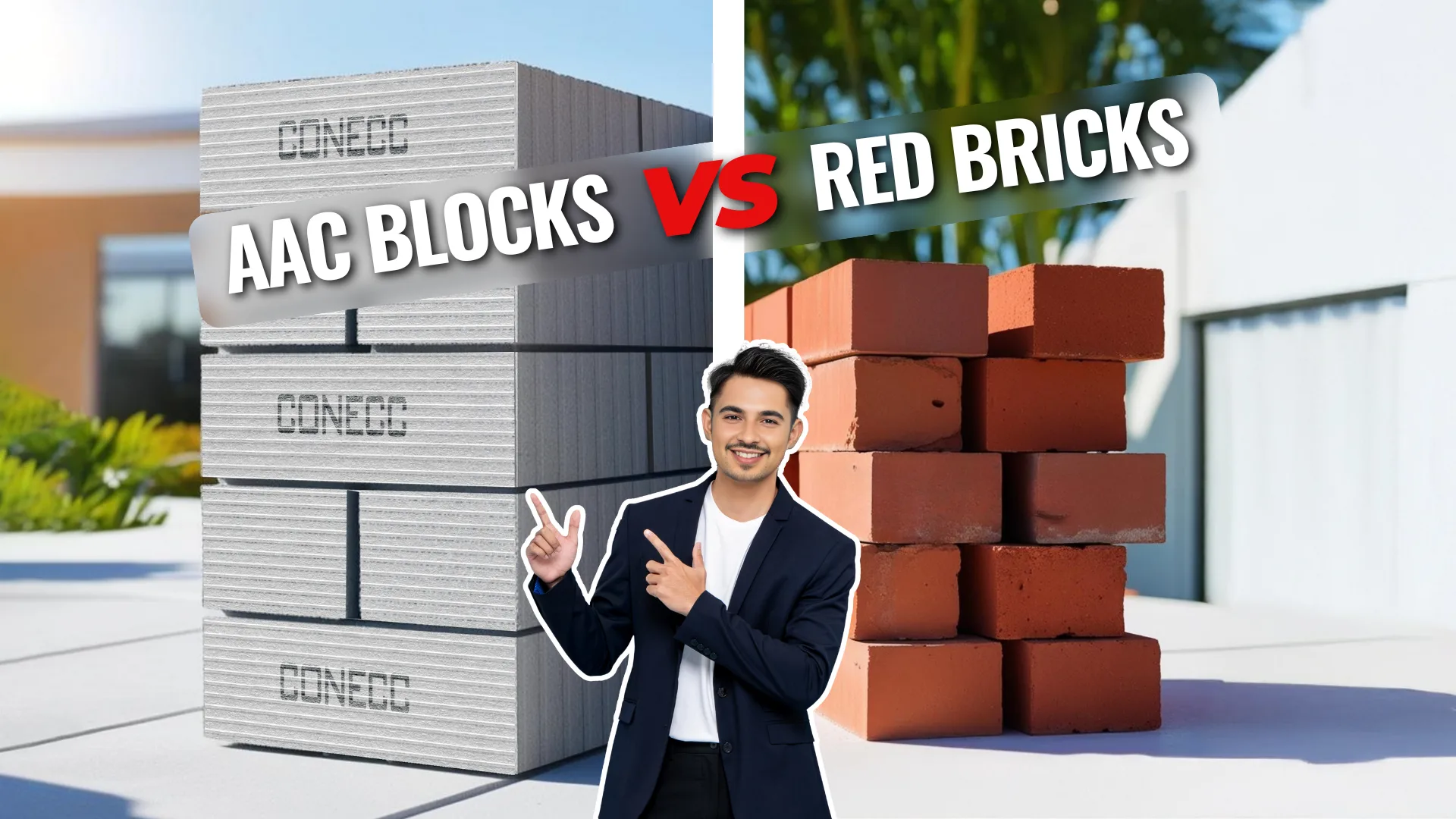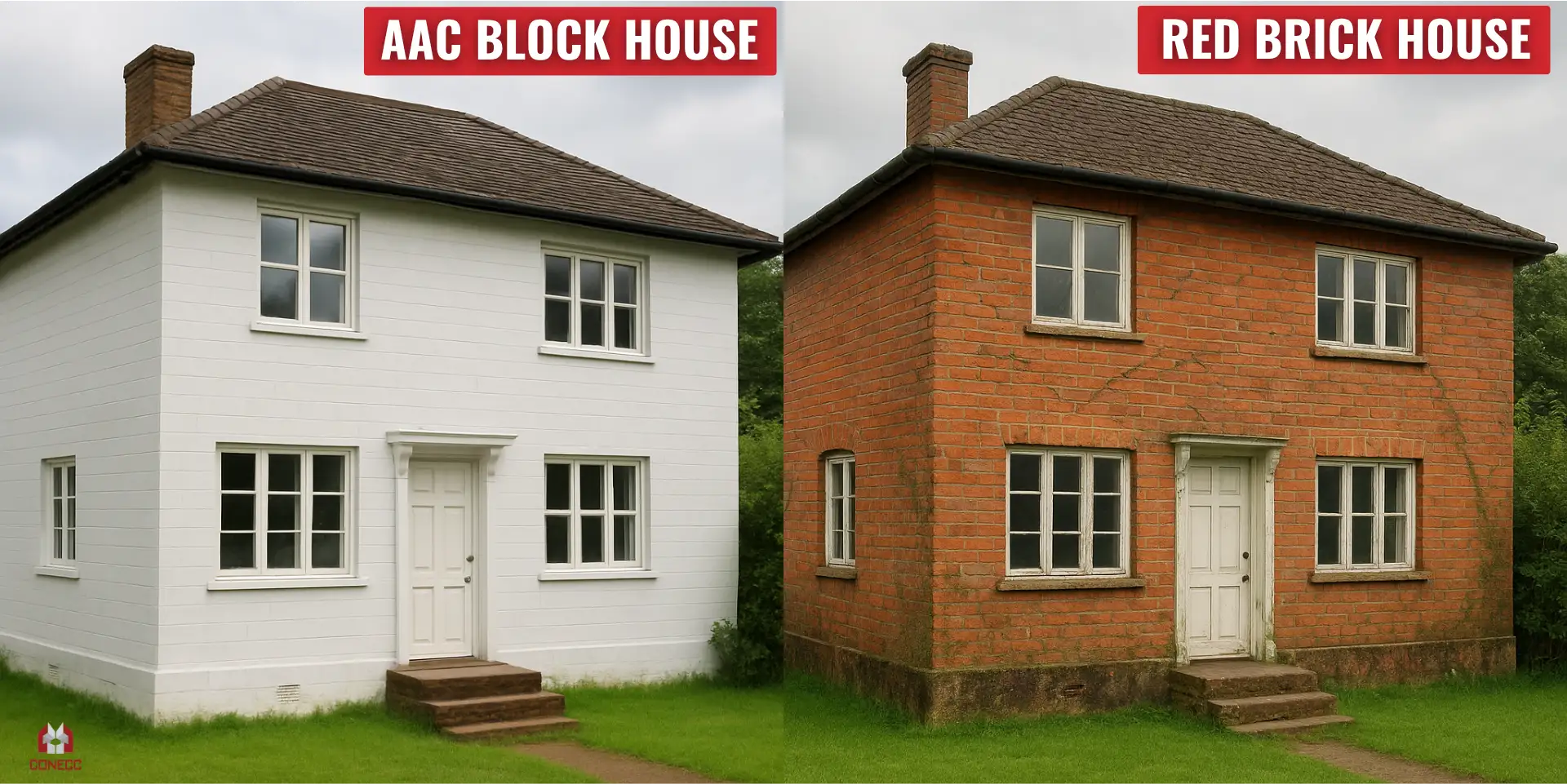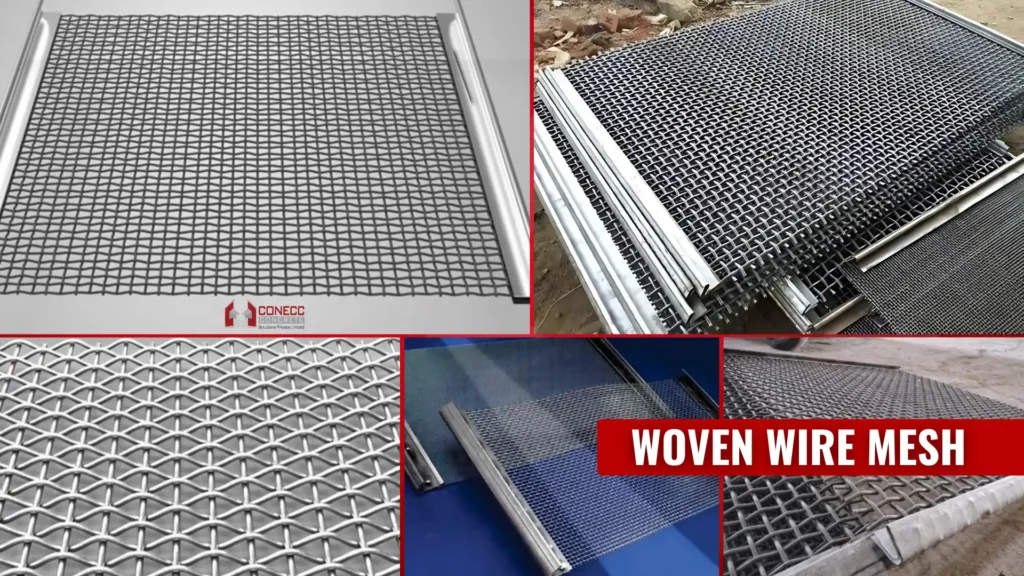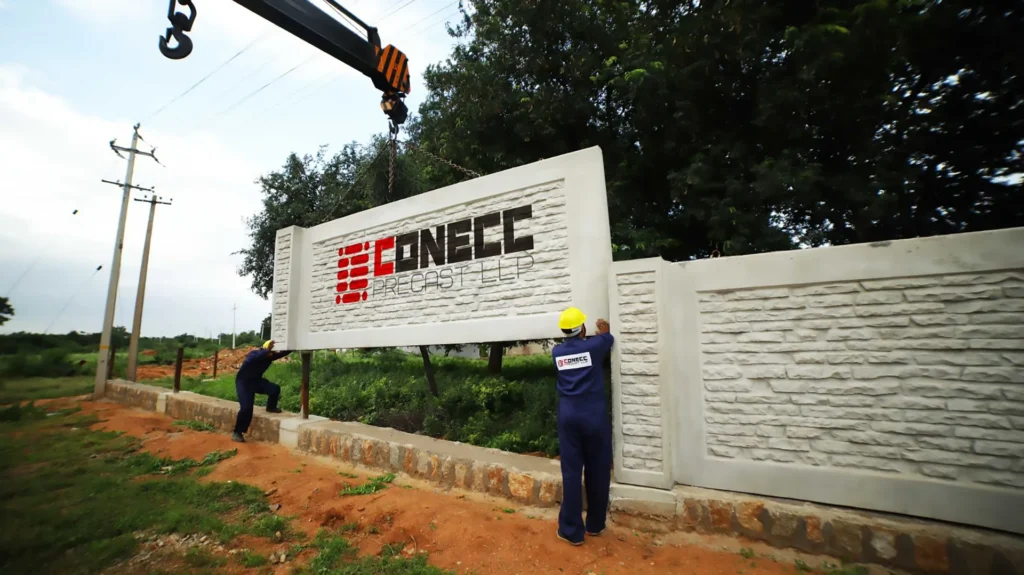Why Are AAC Blocks (Fly Ash Bricks) Preferable Over Traditional Red Bricks?

Why Are AAC Blocks (Fly Ash Bricks) Preferable Over Traditional Red Bricks?
Since its introduction in the Indian market, autoclaved aerated concrete blocks have seen a significant increase in popularity. The shift in emphasis from red or clay bricks to AAC blocks shows a significant change in the tide. For a long time, the construction industry, particularly in India, has been dealing with a select group of brick components, which include,
- Red Bricks
- Fly Ash Bricks
- CLC Blocks
- Solid Concrete Blocks
Until the introduction of Autoclaved Aerated Concrete Blocks, the industry had never seen a divergence. The lightweight concrete component’s extensive track record attests to its dependability and robustness. Our previous blog Fly ash brick provides a good overview of the history of AAC blocks. This will give you a lot of information about AAC blocks and their early entry into the European market.
Bricks have been the most common building material for masonry construction, as stated in the preceding sentences. Due to the varying needs of consumers, these bricks have evolved over time into a variety of shapes, textures, and sizes. The Industrial Revolution was the period during which brick production soared to new heights in response to increased market demand. This was the first time a mechanized method of mass brick manufacture was used. The red and clay bricks never looked back till the so-called novice arrived
The AAC blocks may have had a slow invasion in the beginning, but they soon caught up with the phase. The only reason for this is because of the AAC blocks’ competitive and significant advantages.
Why Should You Choose AAC Blocks Over Red Brick?
Fly Ash Bricks are bricks made from the waste material left over from various manufacturers as a by-product. The powdered ash is the only solid component of the brick, while water is the primary liquid component. Other substances that have been economically protected so far are only in small amounts. The manufacture of fly ash bricks is based on the reaction of lime with fly ash silica to produce calcium silicate hydrates (C-S-H), which binds the materials together to form brick and acts as a binding material. The quality of the fly ash used determines the quality of the bricks produced AAC Blocks.

Steps Of Manufacturing Fly Ash Bricks
Red bricks have shown to be a practical choice among the large range of building materials used in India, as evidenced by proofs and years of research. Because of their dependability and low cost, they have become a popular yet trustworthy building component. And before the introduction of AAC blocks into the Indian market, these blocks were widely accepted. AAC blocks have had a considerable presence in the Indian construction sector since their introduction. The Evolution for a more detailed description. The following are the main benefits of moving from Red Bricks to AAC Blocks.
- Red bricks have a defined or standard size, which limits their application on a larger scale. When compared to AAC blocks, they come in a variety of sizes for easier adaptation and use.
- Another important feature of AAC blocks that sets them apart from Red Bricks is their weight. Traditional red bricks weigh significantly more than AAC blocks, which are lightweight in nature, due to their heavy content and production technique.
- One of the most difficult aspects of the Red Bricks has been the coarse aggregate phase, which is not present in the AAC blocks.
- There’s plenty of information available on the advantages of AAC blocks over traditional Red Bricks. And this is just the beginning of an entirely new universe of Autoclaved Aerated Concrete Blocks.
| PLACES WITH FAST DELIVERY | CONECC CEMENT BRICKS NAMES |
|---|---|
| karnataka | cement blocks in karnataka |
| andhra pradesh | cement blocks in andhra pradesh |
| goa | cement blocks in goa |
| shimoga | cement blocks in shimoga |
| hubli | cement blocks in hubli |
| belgaum | cement blocks in belgaum |
| davangere | cement blocks in davangere |
| udupi | cement blocks in udupi |
| chikmagalur | cement blocks in chikmagalur |
| chitradurga | cement blocks in chitradurga |
| honnavar | cement blocks in honnavar |
Recent Posts
What Is Woven Wire Mesh?
Hey, if you're working on any project, woven wire mesh is basically...
Read MoreCONECC BROCHURE DOWNLOAD
Home AAC Blocks Products AAC Blocks Precast Walls Wire Mesh Chain Link...
Read MoreTop 10 FAQs About AAC Blocks Answered by Experts
Discover the innovative world of AAC blocks—Autoclaved Aerated Concrete blocks that are...
Read MoreGreen building material In India – 2025 │AAC Blocks
Discover the future of construction with AAC blocks, the eco-friendly building material...
Read More



